Building upon the foundational insights from How Sampling and Math Shape Our Digital World, this article explores the deeper ways in which mathematics fuels creative innovation across digital media. From algorithmic art to data-driven storytelling, mathematical principles act as the invisible scaffolding enabling endless creative possibilities in our digital age.
1. Introduction: From Mathematical Foundations to Creative Innovation
Mathematics is often perceived as a purely technical discipline, but its true power lies in its ability to unlock creative potential. Fundamental concepts such as algebra, calculus, and probability are no longer confined to classrooms—they serve as the backbone of digital creativity. For instance, Fourier transforms, originally developed for signal processing, now underpin the development of visual effects, audio synthesis, and even virtual reality environments. These mathematical tools enable creators to manipulate digital media with precision, opening new horizons for artistic expression.
Transitioning from the technical to the imaginative, digital artists and designers harness these mathematical foundations to craft immersive, dynamic, and innovative works. The shift from understanding raw formulas to applying them in creative contexts exemplifies how math becomes a catalyst for artistic experimentation.
2. Beyond Sampling: The Role of Mathematical Algorithms in Creative Processes
While sampling laid the groundwork for digital audio and image manipulation, advanced algorithms now push creative boundaries further. Generative algorithms—powered by mathematical models—enable the creation of art, music, and design that evolve autonomously or interactively. For example, generative adversarial networks (GANs) utilize complex probability distributions to produce hyper-realistic images or artworks that challenge traditional notions of originality.
A notable case is DeepDream, an algorithmic project by Google that employs neural networks to generate surreal, dreamlike visuals. Such models demonstrate how mathematical frameworks—like high-dimensional vector spaces—can generate entirely new artistic styles, emphasizing the synergy between math and creativity.
Furthermore, procedural generation in video games uses fractal mathematics and cellular automata to create expansive, varied worlds efficiently, illustrating how algorithms serve as creative tools beyond mere technical functions.
3. Mathematical Patterns as a Source of Artistic Inspiration
Patterns such as fractals, symmetry, and chaos theory inspire countless digital artists. The Mandelbrot set, a famous fractal, exemplifies the infinite complexity arising from simple mathematical rules. Artists leverage these patterns to generate visually captivating designs—ranging from intricate digital tapestries to modern architectural motifs.
For instance, the works of Mathematician-Artists like Benoît B. Mandelbrot and Manfred Schroeder have shown how fractals can be transformed into mesmerizing visual art. Digital tools enable creators to explore fractal landscapes, producing patterns that evoke natural phenomena like coastlines, clouds, and mountain ranges, thus bridging math and aesthetics seamlessly.
Symmetry and tessellation algorithms, rooted in group theory, are used by designers to craft harmonious visual compositions, exemplifying how mathematical structures directly inform aesthetic choices.
4. Data Manipulation and Visualization: Turning Raw Numbers into Artistic Narratives
Raw data, when processed through mathematical algorithms, can be transformed into compelling visual stories. Data visualization employs statistical and geometric techniques to reveal patterns, trends, and anomalies—making complex datasets accessible and engaging.
For example, tools like Gephi and D3.js leverage graph theory and calculus to animate interconnected networks, from social media interactions to biological systems. These visualizations not only inform but also inspire artistic interpretation, fostering new forms of digital storytelling.
Interactive data-driven art installations—such as those by Urban Screen—use mathematical models to adapt visuals in real-time, demonstrating how data manipulation merges science and art seamlessly.
5. Mathematical Optimization and Creativity: Balancing Aesthetics and Functionality
Optimization algorithms are central in designing user interfaces, product layouts, and even architectural forms. Techniques such as linear programming, genetic algorithms, and simulated annealing help balance aesthetic appeal with practical constraints.
For instance, in web design, algorithms optimize element placement to maximize user engagement while maintaining visual harmony. Similarly, in product design, mathematical models help minimize material use without compromising structural integrity, fostering innovative and sustainable solutions.
The constraints imposed by these algorithms often serve as creative challenges, encouraging designers to explore novel configurations that might not emerge through intuition alone.
6. The Intersection of Math, Technology, and Artistic Collaboration
Interdisciplinary teams combining mathematicians, technologists, and artists leverage mathematical tools such as topology, graph theory, and machine learning to push creative boundaries. These collaborations enable the development of innovative digital art forms, interactive experiences, and immersive environments.
Emerging trends like AI-driven generative art demonstrate how machine learning models trained on mathematical structures can produce unpredictable yet aesthetically pleasing outputs, fostering a new era of artistic experimentation.
For example, projects like Google Magenta showcase how AI and machine learning harness mathematical algorithms to generate music and visual art, exemplifying the fruitful synergy of math and artistic collaboration.
7. Future Horizons: Mathematical Innovation as a Catalyst for Digital Creativity
Looking ahead, breakthroughs in areas like quantum computing, topology, and higher-dimensional geometry promise to revolutionize digital creativity. These mathematical advancements could enable real-time rendering of hyper-complex visual spaces or facilitate entirely new modes of artistic expression.
Moreover, as AI models become more integrated with mathematical rigor, the boundary between human and machine creativity may blur further, leading to collaborations where mathematics acts as both a tool and a source of inspiration.
This evolving relationship suggests a future where mathematical exploration continues to serve as a vital driver of innovative digital art, expanding the possibilities of what can be imagined and created.
8. Returning to the Roots: How Sampling and Math Continue to Enable Creativity
Despite the technological advancements, the core principles of sampling and mathematics remain central to digital creativity. Sampling techniques—such as digital audio slicing or pixel-based image manipulation—are grounded in mathematical concepts like Fourier analysis and grid theory. These foundational principles continue to underpin innovative artistic mediums, from remix culture to immersive virtual environments.
As new mathematical models emerge, they expand the toolkit available to creators, allowing for more complex and nuanced artistic expressions. The interplay between sampling, math, and creative exploration ensures that digital innovation remains rooted yet ever-evolving.
In essence, understanding these mathematical fundamentals empowers artists and technologists alike to push the boundaries of digital media, fostering a rich landscape of ongoing innovation.

